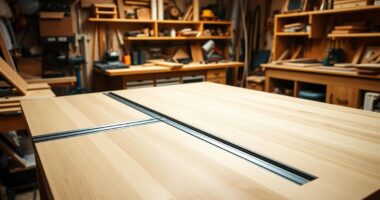Did you know that woodpecker damage can cost homeowners an astonishing $1 billion annually in repair and prevention efforts? These colorful birds, while fascinating, can quickly become a significant nuisance, especially when they set their sights on your beloved outdoor decking. Understanding how to protect your deck from woodpecker damage is essential to keep your outdoor space pristine and maintain its value.
In this article, you’ll learn effective decking solutions to combat the destructive tendencies of these birds. From proactive understanding of their behavior to various woodpecker deterrents, we’ll provide you with expert recommendations to ensure your deck stands the test of time.
Key Takeaways
- Woodpecker damage can lead to costly repairs if left unaddressed.
- Understanding woodpecker behavior is crucial for effective deterrence.
- Utilizing specific decking solutions can help protect your deck.
- Proactive strategies can significantly reduce the risk of woodpecker visits.
- Regular maintenance is key to a long-lasting outdoor space.
Understanding Woodpecker Behavior
Woodpecker behavior reveals fascinating aspects of their lives that shape how they interact with their environment. You may observe woodpeckers drumming on trees or structures. This drumming serves multiple purposes, such as establishing territory, attracting mates, or excavating nesting sites. The timing and intensity of these actions often reflect their immediate needs.
Understanding how woodpeckers act provides insight into their nesting habits. For example, during the breeding season, their drumming may decrease as they focus on courtship and building nests. Conversely, when searching for food, woodpeckers create irregular holes in search of insects beneath the bark. Acorn woodpeckers exemplify this behavior as they drill numerous holes to store food for later. Recognizing these patterns can help you devise more targeted strategies to protect your property from potential woodpecker damage.
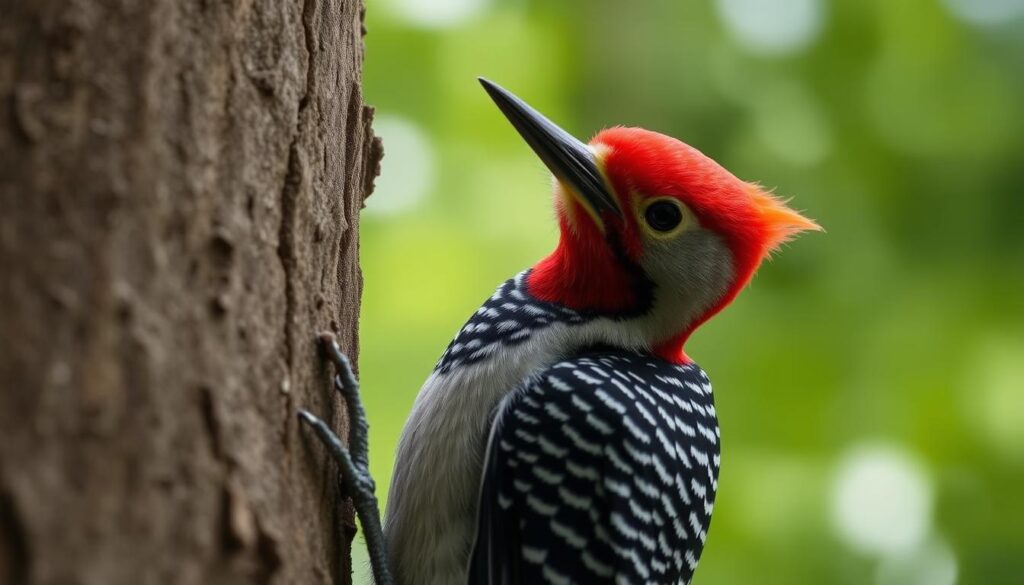
Why Woodpeckers Peck at Your Deck
Understanding the woodpecker pecking reasons can help you protect your outdoor space effectively. These birds are known for their distinctive behavior, particularly when it comes to seeking food sources or creating nesting sites. Woodpeckers often target specific materials, such as untreated wood or grooved plywood, that make it easier for them to extract insects hidden within.
Nesting instinct drives many woodpeckers to create holes in your deck as they look for suitable places to raise their young. These types of pecking can lead to substantial damage if left unaddressed. It is essential to identify whether your deck’s integrity is at risk due to these actions.
In essence, comprehending the motivations behind woodpecker activities can illuminate effective ways to safeguard your deck against potential harm. Being informed about their food sources, nesting habits, and preferred materials can steer you towards the most appropriate preventive measures.
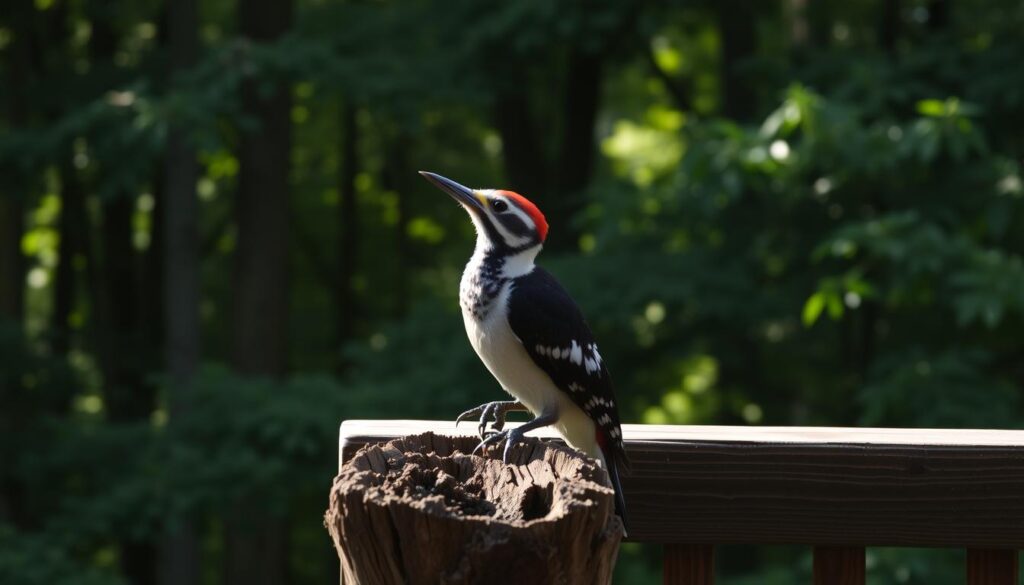
Identifying Signs of Woodpecker Damage
Recognizing the signs of woodpecker damage early can save you from extensive issues down the line. One key aspect of a thorough deck inspection involves looking for small, irregular holes that indicate foraging activity. Alternatively, smooth, rounded holes may be present if woodpeckers are nesting in your deck structures.
While performing a damage assessment, pay close attention to the presence of wood chips around these holes. The wood chips serve as clear evidence of active pecking, suggesting that woodpeckers are frequenting your deck. Ignoring these early warning signs can potentially lead to significant structural damage, resulting in costly repairs that could have been easily avoided.
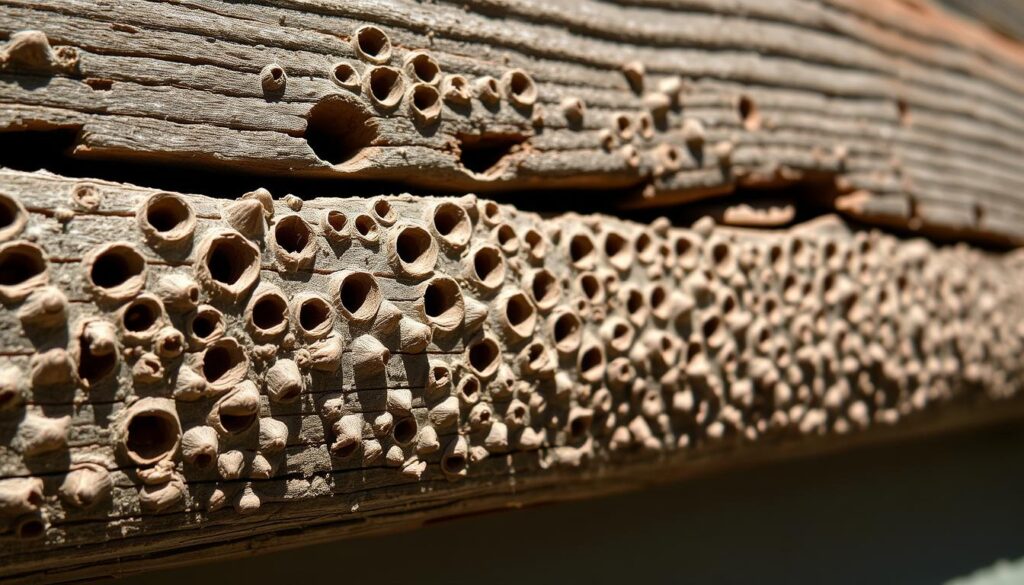
Timely action following your inspections can greatly mitigate risks. By promptly addressing any signs of woodpecker damage, you can maintain the integrity of your deck for many years to come.
Combating Woodpecker Damage on Your Deck
Woodpecker damage can take various forms on your deck, and recognizing the types of woodpecker damage early can save you time and money in the long run. Understanding these differences is crucial for effective damage assessment. By evaluating the severity of the damage, you can determine appropriate repair options that work best for your situation.
Understanding the Types of Woodpecker Damage
Woodpeckers are known to cause two main types of damage: feeding and nesting. Feeding damage typically involves small holes, often spaced closely together. These indicate that the bird is searching for insects beneath the wood surface. Nesting damage produces larger holes, more irregular in shape, which can compromise the integrity of your deck. Recognizing these differences can help you take timely action.
Assessing the Severity of the Damage
A thorough damage assessment should include a careful examination of both the size and location of the holes. Small holes usually suggest that the damage is localized and may require less immediate attention. In contrast, large holes can indicate a more severe problem that might necessitate immediate repair options to prevent further decay and structural failure. A systematic approach to damage assessment ensures that no aspect of the damage is overlooked, allowing for effective management of woodpecker problems.
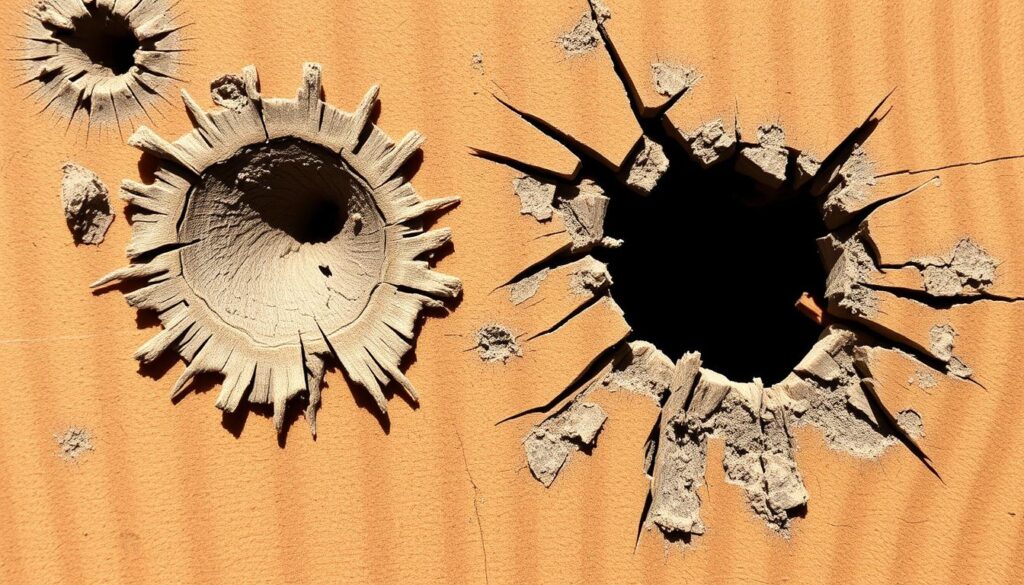
Preventive Measures for Protecting Your Deck
Protecting your deck from woodpecker damage involves thoughtful choices regarding both materials and treatments. Selecting the right deck materials can significantly reduce the risk of woodpecker activity. Additionally, employing protective treatments and wood finishes can enhance the longevity and integrity of your deck.
Choosing the Right Deck Material
When it comes to deck materials, options such as cedar, redwood, and pressure-treated wood stand out for their resistance to woodpecker interest. These materials not only resist the pecking but are also naturally durable, providing a robust solution for your outdoor space. Investing in quality deck materials will offer peace of mind and a more enjoyable outdoor living experience.
Protective Finishes and Treatments
Applying protective treatments is another crucial step in safeguarding your deck. Specialized wood finishes designed to repel woodpeckers can make surfaces less attractive for feeding. Products like BeakGuard can create effective barriers, preserving the beauty of your deck while deterring these birds. Regularly applying these protective treatments ensures that your deck remains less inviting for woodpeckers, ultimately saving you from costly repairs.

Deterring Woodpeckers from Your Property
When it comes to protecting your property from woodpecker damage, using a combination of natural methods and commercial products can yield the best results. This approach can help you effectively deter these persistent birds. You might find that employing various woodpecker deterrents, from shiny objects to specialized bird repellents, can create an environment less appealing to woodpeckers.
Natural Deterrents and Scare Tactics
Utilizing scare tactics can be a simple yet effective way to keep woodpeckers at bay. Here are some natural options you can consider:
- Reflective tape: Hanging shiny tape around your deck can dissuade woodpeckers from approaching.
- Pie tins: Suspended from trees or eaves, they create noise and movement that can frighten birds away.
- Wind chimes: The sound and movement can act as a distraction and make your property less hospitable.
- Predator decoys: Placing images or figurines of predatory birds can make woodpeckers think twice before visiting.
Commercial Bird Deterrents and Repellents
If natural methods aren’t sufficient, look into various commercial bird repellents. These products cater to different preferences and provide long-lasting effects. Here are some examples:
| Product Name | Description | Effectiveness |
|---|---|---|
| Avian Control | A long-lasting bird repellent that is safe for use in residential areas. | Effective for extended periods when applied correctly. |
| Bird-X Bird Spikes | Physical barriers that prevent woodpeckers from landing. | Highly effective for areas with persistent woodpecker activity. |
| EcoSMART Organic Bird Repellent | A natural spray that repels without harmful chemicals. | Good for environmentally conscious individuals. |
Combining these methods increases your chances of successfully protecting your deck from woodpecker damage. Implementing both scare tactics and commercial bird repellents will create an uninviting environment for these birds.
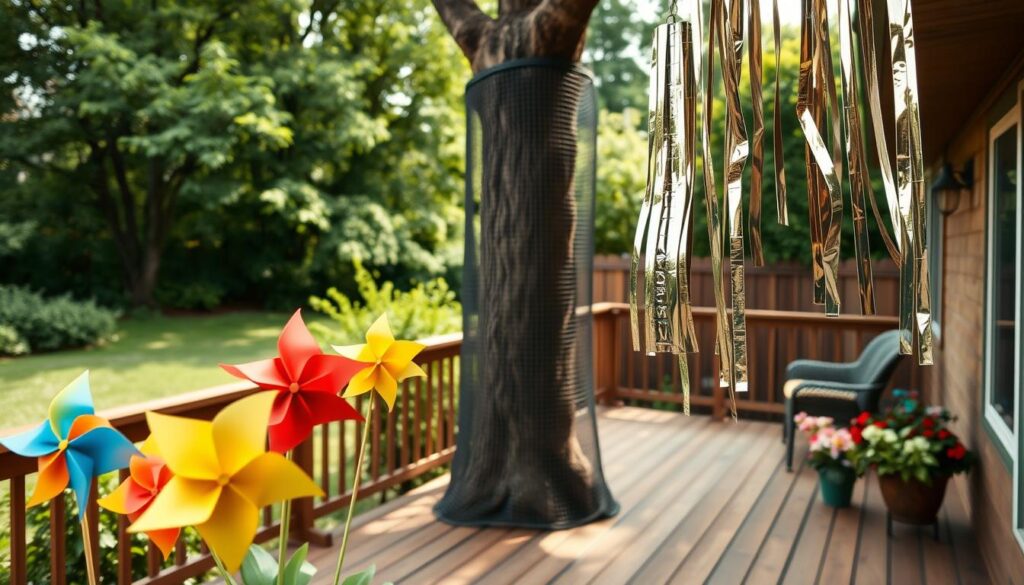
Removing Woodpecker Food Sources
Woodpeckers often target homes with insect infestations, as these pests offer an easy meal. To protect your property, identifying these food sources becomes essential. Effective pest control can help reduce insect populations, thus making your home less appealing to woodpeckers.
Identifying Insect Infestations
Begin by inspecting your home and surrounding areas for signs of insect infestations. Look for:
- Holes in wood that may indicate carpenter bees or termites.
- Visible insects or their larvae, which can often be found in decaying wood.
- Dead insects around your property that can alert you to a larger problem.
Spotting these indicators early allows for a proactive approach to managing pest control and can significantly affect how woodpeckers view your deck as a food source.
Implementing Extermination Methods
Once you identify insect infestations, taking action is crucial. Consider these pest control methods:
- Utilize insecticides specifically designed for the pests causing the problem. Always follow manufacturer guidelines for safety.
- Engage a professional pest control service if the infestation is severe. They have access to stronger treatments and can ensure thorough extermination.
- Implement preventive measures like regular inspections to catch infestations early.
By efficiently removing woodpecker food sources through effective pest control, you’ll make your property less attractive to these birds.

Creating Alternative Feeding Options
Providing woodpeckers with alternative feeding options reduces their interest in pecking at your deck. By strategically planting berry bushes and utilizing bird feeders, you can encourage these birds to find food sources that won’t damage your home.
Planting Berry Bushes
Consider selecting a variety of berry bushes that thrive in your local climate. These natural bushes not only offer woodpeckers a reliable food source but also enhance your landscape. Popular choices include:
- Blueberry bushes
- Raspberry plants
- Blackberry vines
- Strawberry plants
Position these berry bushes at a suitable distance from your deck to attract woodpeckers away from your home while allowing them to forage freely.
Using Bird Feeders Effectively
Bird feeders can serve as an excellent complement to berry bushes. Fill them with suet, which woodpeckers love, and place the feeders progressively farther from your deck. Over time, this method can create a habit for the woodpeckers to seek out these feeding stations instead. Consider the following tips for optimizing your bird feeders:
- Choose feeders designed specifically for woodpeckers.
- Keep the feeders clean to ensure the birds return regularly.
- Refill the feeders consistently to maintain their interest.
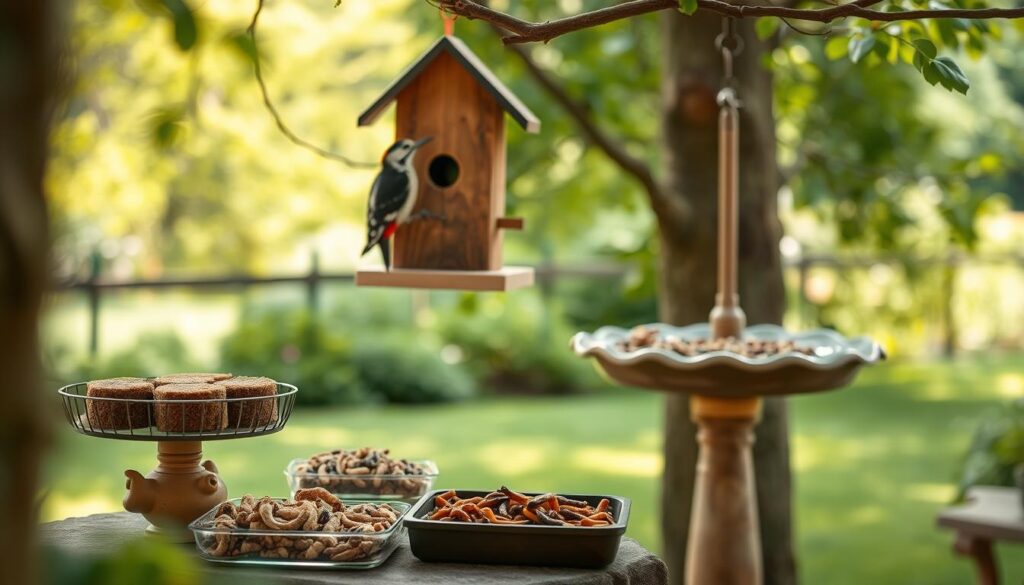
Utilizing Visual and Audio Deterrents
When it comes to protecting your deck from woodpecker damage, employing visual and audio deterrents proves effective. These techniques can startle the birds and disrupt their behavior, making your outdoor space less appealing for them.
Reflective Objects and Their Effectiveness
Visual deterrents such as reflective objects can create a barrier that confuses woodpeckers. Items like reflective tape, old CDs, and bird-repellent balloons bounce sunlight, creating dazzling patterns. You can hang these reflective objects around your deck area to discourage woodpecker visits without harming the birds.
Sound Deterrents for Longer Lasting Impact
Incorporating audio deterrents adds another layer of protection. Devices that emit sounds of predator calls or other alarming noises can alert woodpeckers to danger. These sound deterrents, when used in conjunction with visual elements, can effectively create an environment that discourages woodpecker activity while preserving the peaceful ambiance of your outdoor space.
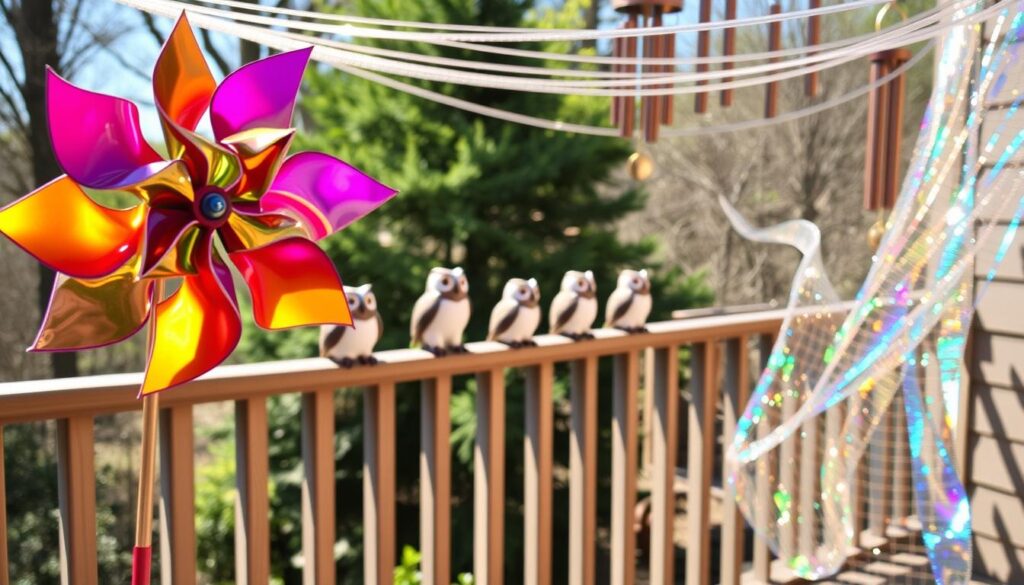
Repairing Existing Damage
Once you notice woodpecker damage, a thorough assessment of the extent is essential for determining the next steps. Each situation can vary significantly, making it vital to understand whether minor or significant repairs are required. This knowledge helps you decide if you can tackle the repairs yourself or if you should seek out professional services.
Assessing the Damage Extent
Start by examining the affected areas closely. Look for signs such as small holes or larger, deeper damages that might compromise the structure. For minor surface damage, fixing woodpecker damage could be accomplished easily with some wood putty and a little paint to blend in. This approach is cost-effective and can restore the appearance of your deck.
DIY vs. Professional Repair Options
While DIY repair tips can save you money, significant structural damage often requires the expertise of professional services. Weigh the options carefully; a handyman may handle superficial issues well, but extensive damage may need a contractor. Understanding the costs involved in both methods will guide you to the right choice for your deck’s longevity.

Long-term Strategies for Woodpecker Management
Implementing effective woodpecker management requires long-term strategies that emphasize proactive measures. Regular maintenance and inspections serve as your first line of defense against woodpecker damage. By keeping a close eye on your deck, you can quickly identify any signs of woodpecker activity before they escalate into significant issues.
Regular Inspections and Maintenance
Routine inspections will help you understand the condition of your deck and any potential vulnerabilities. Look for signs like small holes, pecking marks, or wood shavings. Taking swift action can prevent further damage. Regular maintenance tasks, such as sealing gaps and ensuring the wood remains intact, create a less inviting environment for woodpeckers.
Monitoring Woodpecker Activity
Understanding and monitoring woodpecker activity plays a critical role in your long-term strategies. Observing patterns, such as specific times of day when they are most active, can provide insight into their behavior. You might derive keen insights by recording sightings and noting any recurring issues. Such proactive engagement forms a strong basis for effective woodpecker management.

Conclusion
Woodpecker damage can significantly impact your deck and outdoor spaces, but it doesn’t have to be a permanent issue. By gaining insight into woodpecker behavior, you can effectively implement woodpecker prevention strategies tailored to your property. Awareness of the issues these birds pose allows you to take proactive measures to keep your deck protected.
Regular outdoor maintenance is essential in safeguarding your deck from potential damage. Routine inspections, combined with the utilization of natural and commercial deterrents, will help reduce their impact. By fostering a proactive approach, you ensure your deck remains a beautiful place for years to come.
Ultimately, the combination of understanding woodpecker habits and executing well-thought-out preventive measures will lead to lasting results. Protect your investment, enjoy your outdoor space, and ensure that your deck stands resilient against these persistent pests.



